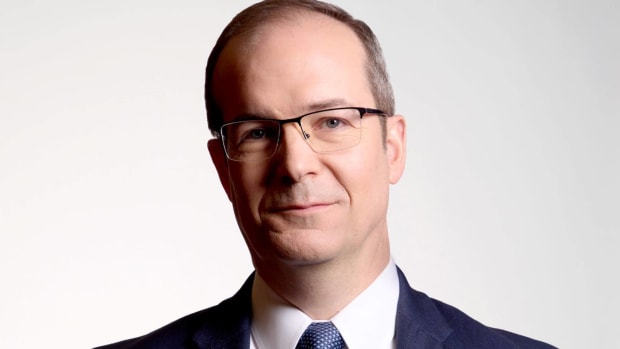
The investment research firm Morningstar takes a conservative, prudent approach in its stock analysis and recommendations.
It stresses a long-term, fundamentals-based, value strategy for investing. That means looking for high-quality companies whose stocks are undervalued, says Dave Sekera, Morningstar’s chief U.S. market strategist. The companies should have moats, or long-term competitive advantages.
Asset allocation, such as between value and growth stocks, should be based on valuation, he says. And the number of stocks in your portfolio should be enough to generate a diversified portfolio.
Here are Sekera’s thoughts on these issues along with his stock picks.
TheStreet: Is there an overall philosophy you think stock investors should adopt?
Sekera: Morningstar’s philosophy is that you need to invest for the long term. We recommend a top-down approach, where you start with the right asset allocation based on your risk tolerance, investment goals and time horizon.
Keep in mind that real long-term investing is driven by time in the market rather than market-timing. We also favor a valuation approach. Make sure you have an appropriate asset allocation as the market and your own investment situation changes over time.
TheStreet: How should individuals choose stocks?
Sekera: You need to look for high-quality businesses and find stocks that are trading at a discount to fair value. Look for companies with economic moats. Do they have long-term competitive advantages that will allow returns on capital above their cost of capital? We use fundamental analysis, including cash flow, to determine intrinsic value.

Morningstar
TheStreet: How should investors decide on stock allocations – value versus growth and large-cap versus small-cap, for example?
Sekera: It’s based on valuation. At the beginning of the year, we thought both growth and value stocks were below fair value. So we recommended overweighting both – a barbell approach.
But there has been a strong rally in growth, with value lagging behind. So, now it might be good to underweight growth and reinvest into value. You can do a similar analysis for large-cap versus small-cap. It boils down to valuations.
TheStreet: How should investors decide how many stocks to have in their portfolio?
Sekera: There’s no standard answer. You need to make sure you have enough diversification across your portfolio so that you aren’t overly concentrated in one position. You’ll generally want mutual funds and ETFs (exchange-traded funds) and can supplement them with stocks.
If you don’t have many mutual funds and ETFs, you’ll need more stocks. That’s to make sure you have diversification across sectors and that your stocks have a low correlation to one another.
TheStreet: Can you talk about three of your favorite stocks?
1. Berkshire Hathaway: (BRK.B). It trades at a 9% discount to our fair value estimate. With its diversification and low overall risk profile, the stock offers one of the better risk-adjusted return profiles in the financial-services sector.
We’re impressed by Berkshire’s ability in most years to generate high-single- to double-digit growth in book value per share. That’s comfortably above our estimate of its cost of capital. And we are comfortable with the succession plan for Chief Executive Warren Buffett.
2. Charles Schwab (SCHW). It trades at a 22% discount to our fair value estimate. The stock was caught in the [financial-stock] downdraft earlier this year, following the Silicon Valley Bank failure.
We lowered our fair value estimate in March, as the projected decline in low-cost funding from deposits will be replaced with higher cost short-term debt and other funding programs. However, we are comfortable with Schwab’s liquidity and capital profile.
Schwab’s scalable and vertically-integrated business model should enable it to convert an increasing percentage of revenue into earnings.
3. AT&T (T). It now trades at a 36% discount to our fair value estimate. We like it because it pays almost a 7% dividend yield. You’re paid to wait until the stock goes to fair value. We see compound revenue growth of 2.6% over the next five years, and 2% profit growth.
AT&T benefits from a market with only three major players [Verizon and T-Mobile are the others]. Cellphone pricing will get much more rational over time. Companies won’t use pricing to draw additional customers at the expense of profit margins.
The author of this story owns shares of Berkshire Hathaway.







